Serving 225 students in grades 4-6, Taylor Intermediate School ranks in the top 20% of all schools in Arizona for overall test scores (math proficiency is top 20%, and reading proficiency is top 20%).
The percentage of students achieving proficiency in math is 56% (which is higher than the Arizona state average of 35%). The percentage of students achieving proficiency in reading/language arts is 52% (which is higher than the Arizona state average of 40%).
The student:teacher ratio of 20:1 is higher than the Arizona state level of 17:1.
Minority enrollment is 20% of the student body (majority Hispanic), which is lower than the Arizona state average of 66% (majority Hispanic).
Quick Stats (2025)
- Grades: 4-6
- Enrollment: 225 students
- Student:Teacher Ratio: 20:1
- Minority Enrollment: 20%
- Overall Testing Rank: Top 20% in AZ
- Math Proficiency: 56% (Top 20%)
- Reading Proficiency: 52% (Top 30%)
- Science Proficiency: 35-39% (Top 30%)
- Source: National Center for Education Statistics (NCES), AZ Dept. of Education
Top Rankings
Taylor Intermediate School ranks among the top 20% of public schools in Arizona for:
Category
Attribute
Overall Rank
Math Proficiency
School Overview
Taylor Intermediate School's student population of 225 students has stayed relatively flat over five school years.
The teacher population of 11 teachers has declined by 8% over five school years.
Grades Offered
Grades 4-6
Total Students
225 students
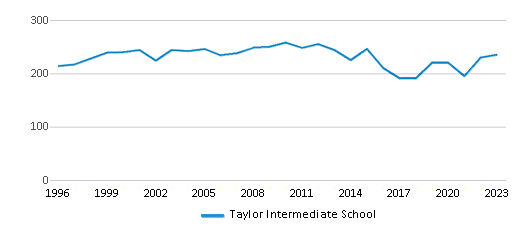
Gender %
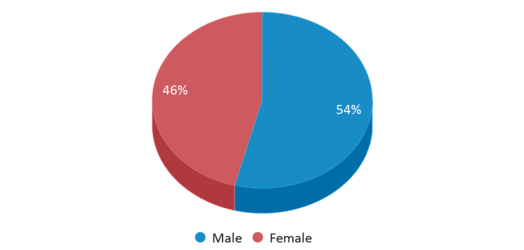
Total Classroom Teachers
11 teachers
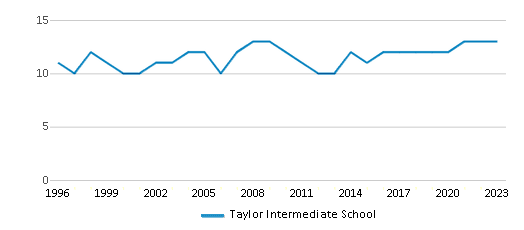
Students by Grade
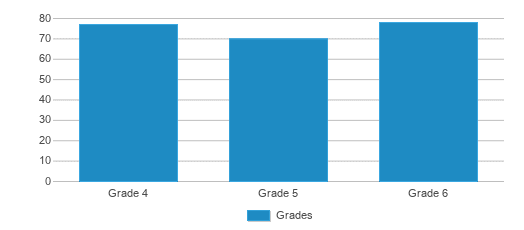
School Rankings
Taylor Intermediate School ranks within the top 20% of all 1,956 schools in Arizona (based off of combined math and reading proficiency testing data).
The diversity score of Taylor Intermediate School is 0.34, which is less than the diversity score at state average of 0.66. The school's diversity has stayed relatively flat over five school years.
Overall Testing Rank
#367 out of 1956 schools
(Top 20%)
(Top 20%)
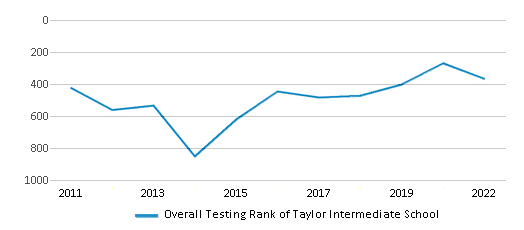
Math Test Scores (% Proficient)
56%
35%
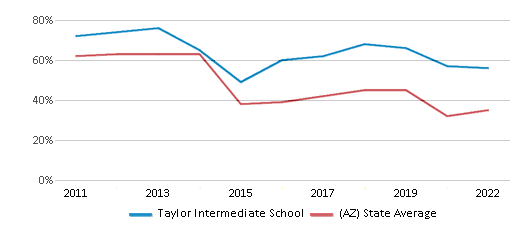
Reading/Language Arts Test Scores (% Proficient)
52%
40%
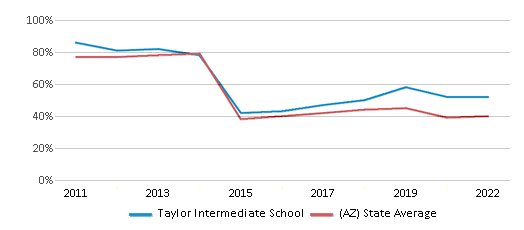
Science Test Scores (% Proficient)
35-39%
24%
Student : Teacher Ratio
20:1
17:1
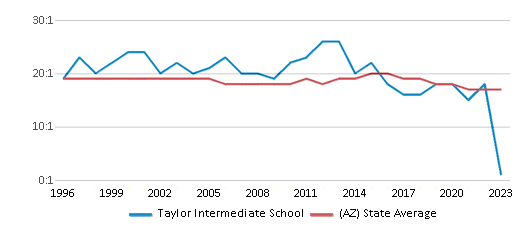
American Indian
1%
5%
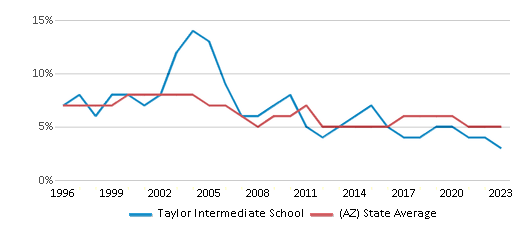
Asian
n/a
3%
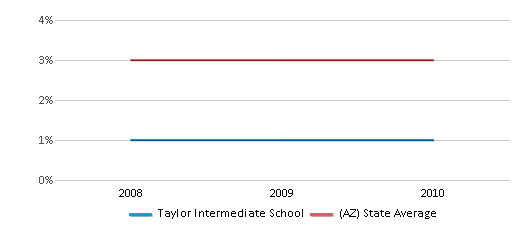
Hispanic
16%
48%
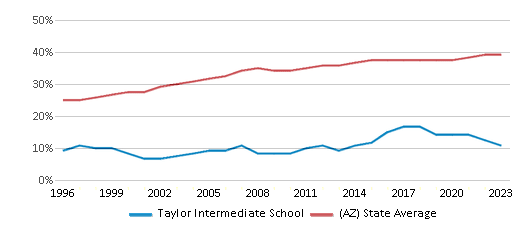
Black
n/a
6%
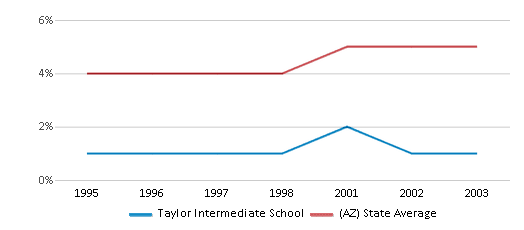
White
80%
34%
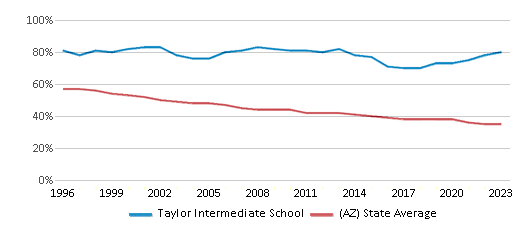
Hawaiian
n/a
n/a
Two or more races
3%
4%
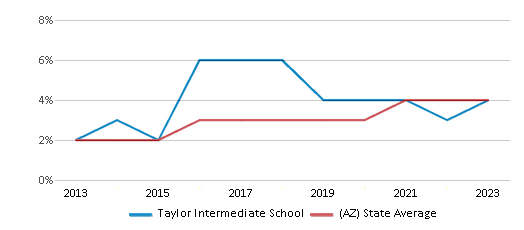
All Ethnic Groups
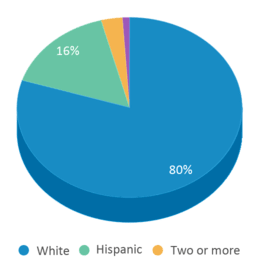
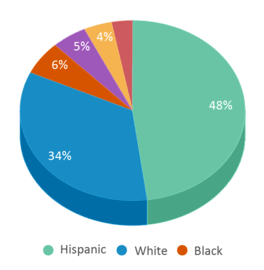
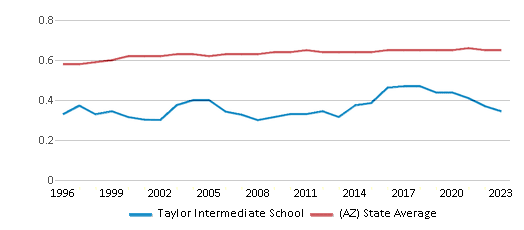
Eligible for Free Lunch
37%
40%
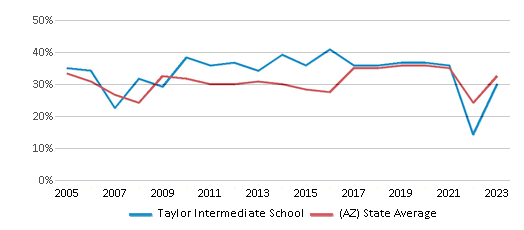
Eligible for Reduced Lunch
12%
10%
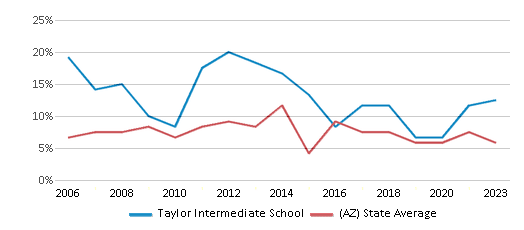
School Statewide Testing
School District Name
Source: National Center for Education Statistics (NCES), AZ Dept. of Education
Frequently Asked Questions
What is Taylor Intermediate School's ranking?
Taylor Intermediate School is ranked #367 out of 1,956 schools, which ranks it among the top 20% of public schools in Arizona.
What percent of students have achieved state testing proficiency in math and reading?
56% of students have achieved math proficiency (compared to the 35% AZ state average), while 52% of students have achieved reading proficiency (compared to the 40% AZ state average).
How many students attend Taylor Intermediate School?
225 students attend Taylor Intermediate School.
What is the racial composition of the student body?
80% of Taylor Intermediate School students are White, 16% of students are Hispanic, 3% of students are Two or more races, and 1% of students are American Indian.
What is the student:teacher ratio of Taylor Intermediate School?
Taylor Intermediate School has a student ration of 20:1, which is higher than the Arizona state average of 17:1.
What grades does Taylor Intermediate School offer ?
Taylor Intermediate School offers enrollment in grades 4-6
What school district is Taylor Intermediate School part of?
Taylor Intermediate School is part of Snowflake Unified District (4391) School District.
School Reviews
5 11/30/2009
I loved The Taylor intermediate school. It provided a great learning facililty that my child loved and thought was fun...as did I. Taylor, Arizona schools are big in there reading acedemics and encourage children to read daily. At the end of every 9 weeks, they get an award if they read the reccomended number of books on their level in a curtain ammount of time (9weekss). Their Principal at Taylor Intermediate, Mr. Hughes, is great also. He is wonderful at problem sovilng and Loves to be involved with the childrens learning. I'm also a huge fan of the childrens physical education. My child would come home every day with a smile on there face telling me how much fun they had at P.E. and my child isn't even a very big fan of physical Tasks.Another Plus is the Teachers at Taylor Intermediate. The teachers there are always finding fun, new solutions for their students. The down side to the teachers though, is that I did have soem trouble with one in the 6th grade. Mrs. Hudson,but there will always be one bad teacher at every school so I guess either way parents will have to deal with one.
Review Taylor Intermediate School. Reviews should be a few sentences in length. Please include any comments on:
- Quality of academic programs, teachers, and facilities
- Availability of music, art, sports and other extracurricular activities
Recent Articles

What Is A Charter School?
Explore the world of charter schools in this comprehensive guide. Learn about their history, how they operate, and the pros and cons of this educational innovation. Discover key facts about charter schools, including admission policies, demographics, and funding, as well as what to look for when considering a charter school for your child.

10 Reasons Why High School Sports Benefit Students
Discover the 10 compelling reasons why high school sports are beneficial for students. This comprehensive article explores how athletics enhance academic performance, foster personal growth, and develop crucial life skills. From improved fitness and time management to leadership development and community representation, learn why participating in high school sports can be a game-changer for students' overall success and well-being.

February 05, 2025
Understanding the U.S. Department of Education: Structure, Impact, and EvolutionWe explore how the Department of Education shapes American education, from its cabinet-level leadership to its impact on millions of students, written for general audiences seeking clarity on this vital institution.





